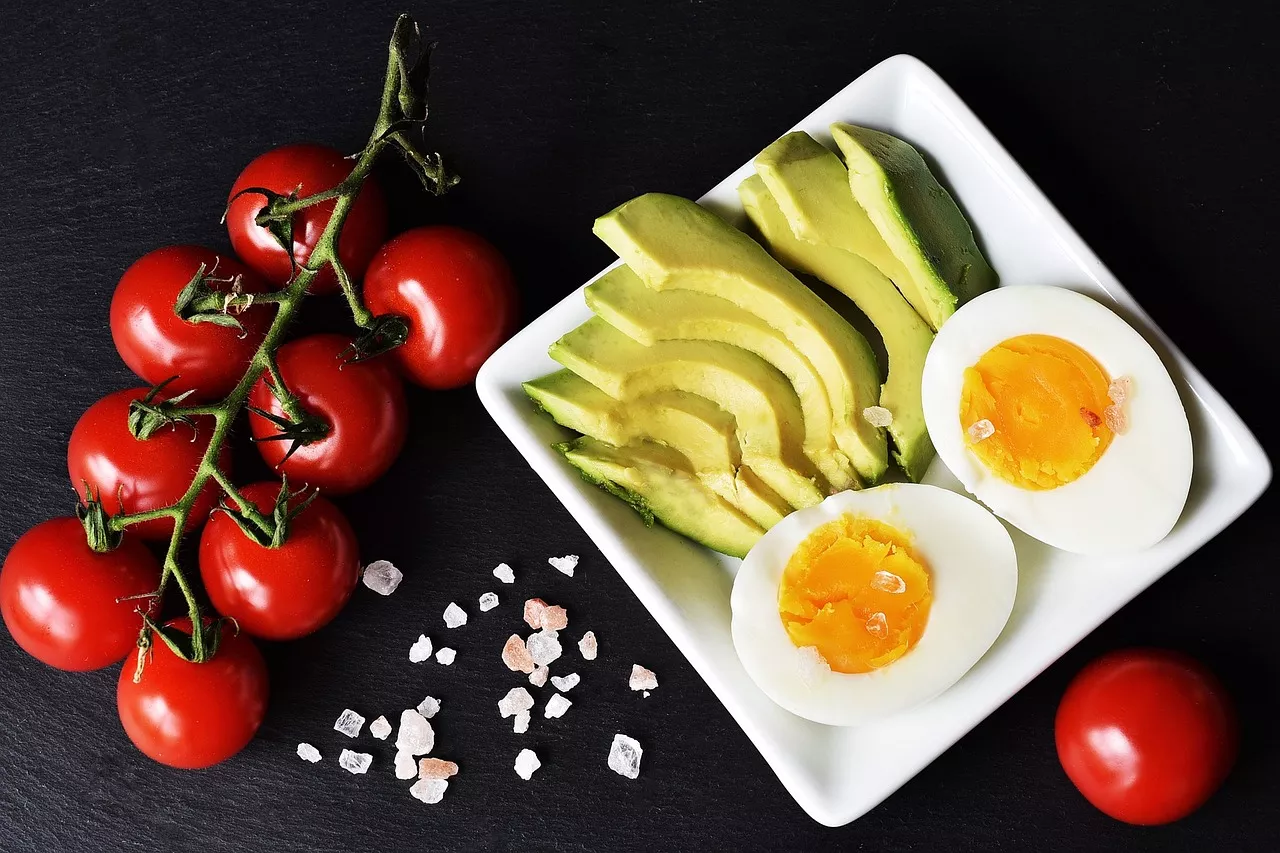Understanding the Science Behind the Keto Diet
The ketogenic diet, or keto diet for short, is a low-carb, high-fat eating plan that has been used for decades to treat epilepsy. However, in recent years, it has gained popularity as an effective weight loss strategy and a way to improve overall health.
The main principle behind the keto diet is to shift your body's primary fuel source from carbohydrates to fats. By drastically reducing your carbohydrate intake and increasing your fat intake, your body enters a metabolic state called ketosis. In ketosis, your body starts producing ketones, which are molecules that are used by your cells as an alternative fuel source.
To achieve and maintain ketosis, you need to limit your carbohydrate intake to around 20-50 grams per day and increase your fat intake to around 70-75% of your daily calories. This may seem counterintuitive, but the science behind the keto diet is sound. By depriving your body of carbohydrates, you force it to burn stored fat for energy, resulting in weight loss.
The keto diet also has other health benefits, including improved insulin sensitivity, reduced inflammation, and increased mental clarity. It has even shown promise in the treatment of conditions such as type 2 diabetes, PCOS, and Alzheimer's disease. However, it is important to note that the keto diet may not be suitable for everyone, especially those with certain medical conditions or dietary restrictions.
Benefits of the Keto Diet for Weight Loss
One of the main reasons why the keto diet has gained so much popularity is its effectiveness for weight loss. When you follow a keto diet, your body becomes a fat-burning machine. By reducing your carbohydrate intake, you lower your insulin levels, which allows your body to access and burn stored fat for fuel.
In addition to promoting fat burning, the keto diet also helps to suppress appetite and control cravings. When you eat a high-fat diet, you feel more satisfied and satiated, which can help you eat fewer calories overall. This, combined with the metabolic benefits of ketosis, can lead to significant weight loss.
Research has shown that the keto diet can be more effective for weight loss than low-fat, calorie-restricted diets. One study found that participants following a ketogenic diet lost more weight and experienced greater improvements in their cholesterol levels compared to those following a low-fat diet.
However, it is important to note that weight loss is not the only benefit of the keto diet. Many people also report increased energy levels, improved mental focus, and better sleep when following a ketogenic eating plan.
The Keto Food Pyramid Explained
The traditional food pyramid, which is based on a high-carbohydrate, low-fat diet, is not suitable for those following the keto diet. That's where the Keto Food Pyramid comes in. This unique take on the traditional food pyramid provides guidance on the types of foods you should focus on to stay in ketosis and achieve optimal results.
At the base of the Keto Food Pyramid are fats and oils. These should make up the majority of your daily calorie intake. Healthy sources of fats include avocados, olive oil, coconut oil, and nuts and seeds. These fats provide the energy your body needs to function and help you stay in ketosis.
Next on the pyramid are proteins. While protein is an essential macronutrient, it should be consumed in moderation on the keto diet. Too much protein can kick you out of ketosis by converting into glucose through a process called gluconeogenesis. Good sources of protein on the keto diet include meat, poultry, fish, and eggs.
Above proteins on the pyramid are non-starchy vegetables. These should be included in your keto diet in moderate amounts. Non-starchy vegetables are low in carbohydrates and high in fiber, making them a valuable source of micronutrients and antioxidants.
Lastly, at the top of the pyramid are carbohydrates. On the keto diet, carbohydrates should be limited to around 20-50 grams per day, mainly coming from vegetables and small amounts of low-carb fruits. High-carb foods like grains, legumes, and sugars should be avoided to maintain ketosis.
By following the Keto Food Pyramid, you can ensure that your keto diet is well-balanced and provides the nutrients your body needs for optimal health and weight loss.
Foods to Include in Your Keto Diet
When following a keto diet, it is important to choose foods that are low in carbohydrates and high in healthy fats. Here are some examples of foods you can include in your keto diet:
1. Avocados: Avocados are an excellent source of healthy fats and fiber, making them a staple on the keto diet. They are also rich in vitamins and minerals, including potassium and magnesium.
2. Olive oil: Olive oil is a healthy fat that is rich in monounsaturated fats and antioxidants. It is a versatile oil that can be used for cooking, dressing salads, or drizzling over cooked vegetables.
3. Coconut oil: Coconut oil is a unique source of fat that is rich in medium-chain triglycerides (MCTs). MCTs are easily converted into ketones by the liver, making coconut oil a valuable addition to the keto diet.
4. Meat and poultry: Meat and poultry are excellent sources of protein and healthy fats. Opt for grass-fed, organic, or pasture-raised options whenever possible.
5. Fish and seafood: Fish and seafood are not only high in healthy fats but also rich in omega-3 fatty acids, which have been shown to have numerous health benefits.
6. Eggs: Eggs are a highly nutritious food that is rich in protein and healthy fats. They are also versatile and can be enjoyed in various ways, such as scrambled, boiled, or as omelets.
7. Non-starchy vegetables: Non-starchy vegetables, such as leafy greens, broccoli, cauliflower, and zucchini, are low in carbohydrates and high in fiber, making them an excellent choice for the keto diet.
Remember to choose high-quality, nutrient-dense foods to ensure that your keto diet is balanced and provides all the necessary nutrients for optimal health.
Foods to Avoid on the Keto Diet
To maintain ketosis and achieve optimal results on the keto diet, it is important to avoid certain foods that are high in carbohydrates. Here are some examples of foods to avoid on the keto diet:
1. Grains: Grains, such as wheat, rice, oats, and corn, are high in carbohydrates and should be avoided on the keto diet. This includes bread, pasta, and cereals.
2. Legumes: Legumes, including beans, lentils, and chickpeas, are also high in carbohydrates and can disrupt ketosis. Avoid these on the keto diet.
3. Sugars and sweeteners: Sugars and sweeteners, including table sugar, honey, maple syrup, and artificial sweeteners, should be avoided on the keto diet.
4. High-carb fruits: While fruits are generally healthy, some are high in carbohydrates and should be limited on the keto diet. Examples include bananas, grapes, and mangoes.
5. Processed foods: Processed foods, such as chips, crackers, and cookies, are often high in carbohydrates and unhealthy fats. These should be avoided on the keto diet.
By avoiding these high-carb foods and focusing on nutrient-dense, low-carb options, you can maintain ketosis and achieve optimal results on the keto diet.
Sample Keto Meal Plan for Beginners
If you're just starting your keto journey, it can be helpful to have a sample meal plan to get you started. Here's an example of a one-day keto meal plan for beginners:
Breakfast:
Scrambled eggs cooked in coconut oil
Avocado slices
Spinach sautéed in olive oil
Lunch:
Grilled chicken breast
Mixed greens salad with olive oil and vinegar dressing-
Steamed broccoli
Snack:
Handful of almonds
Dinner:
Baked salmon with lemon and dill
Roasted Brussels sprouts with bacon
Cauliflower rice
Dessert:
Keto-friendly chocolate mousse made with coconut milk and cocoa powder
Remember to adjust portion sizes and ingredients based on your individual calorie and macronutrient needs. This sample meal plan can serve as a starting point to help you understand what a day on the keto diet might look like.
Tips for Successful Keto Dieting
While the keto diet can be highly effective for weight loss and improving overall health, it does require some planning and preparation. Here are some tips to help you succeed on the keto diet:
1. Plan your meals:
Take the time to plan your meals and snacks in advance. This will help you stay on track and avoid making impulsive food choices.
2. Meal prep:
Consider meal prepping for the week ahead. This can save you time and ensure that you always have a keto-friendly meal or snack available.
3. Stay hydrated:
Drinking enough water is important on the keto diet. Aim for at least 8 cups of water per day to stay hydrated and support optimal health.
4. Include electrolytes:
When you limit your carbohydrate intake, your body excretes more water and electrolytes. To prevent electrolyte imbalances, consider adding a pinch of salt to your meals or drinking bone broth.
5. Be patient:
It takes time for your body to adapt to the keto diet and enter ketosis. Be patient and give yourself time to adjust. It's normal to experience some initial side effects, such as the keto flu, but these usually subside after a few days.
6. Seek support:
Joining online communities or finding a keto buddy can provide support and accountability on your keto journey. Sharing your experiences and learning from others can be highly motivating.
Remember, the keto diet is not a short-term fix but a lifestyle change. By following these tips, you can set yourself up for long-term success on the keto diet.
Common Misconceptions About the Keto Diet
As with any popular diet, there are several misconceptions and myths surrounding the keto diet. Here are some common misconceptions and the truth behind them:
1. The keto diet is all about eating bacon and butter: While the keto diet does emphasize healthy fats, it is important to choose high-quality sources of fats, such as avocados, olive oil, and nuts. Consuming excessive amounts of unhealthy fats can have negative effects on your health.
2. The keto diet is a high-protein diet: While protein is an important macronutrient on the keto diet, it should be consumed in moderation. Too much protein can kick you out of ketosis and hinder weight loss.
3. The keto diet is not sustainable: While the keto diet may require some adjustments and planning, it can be a sustainable eating plan. Many people find that they can easily incorporate the principles of the keto diet into their daily lives.
4. The keto diet is only for weight loss: While weight loss is a common goal on the keto diet, it is not the only benefit. The keto diet has been shown to have numerous health benefits, including improved insulin sensitivity, reduced inflammation, and increased mental clarity.
By understanding and debunking these misconceptions, you can make informed decisions about whether the keto diet is right for you.
Achieving Optimal Weight Loss and Health with the Keto Diet
The ketogenic diet is a powerful tool for weight loss and improving overall health. By understanding the science behind the keto diet and following the principles of the Keto Food Pyramid, you can achieve optimal results.
Remember to focus on nutrient-dense, low-carb foods, and avoid high-carb options to maintain ketosis. Plan your meals, stay hydrated, and be patient with yourself as your body adapts to the keto diet.
With the right mindset, support, and commitment, you can embark on your keto adventure and achieve your weight loss and health goals. So, are you ready to decode the Keto Food Pyramid and start your journey to optimal health and wellness?
Let's get started!

 A Step-by-Step Guide to Making Irresistible Homestyle Potato Chips
A Step-by-Step Guide to Making Irresistible Homestyle Potato Chips



